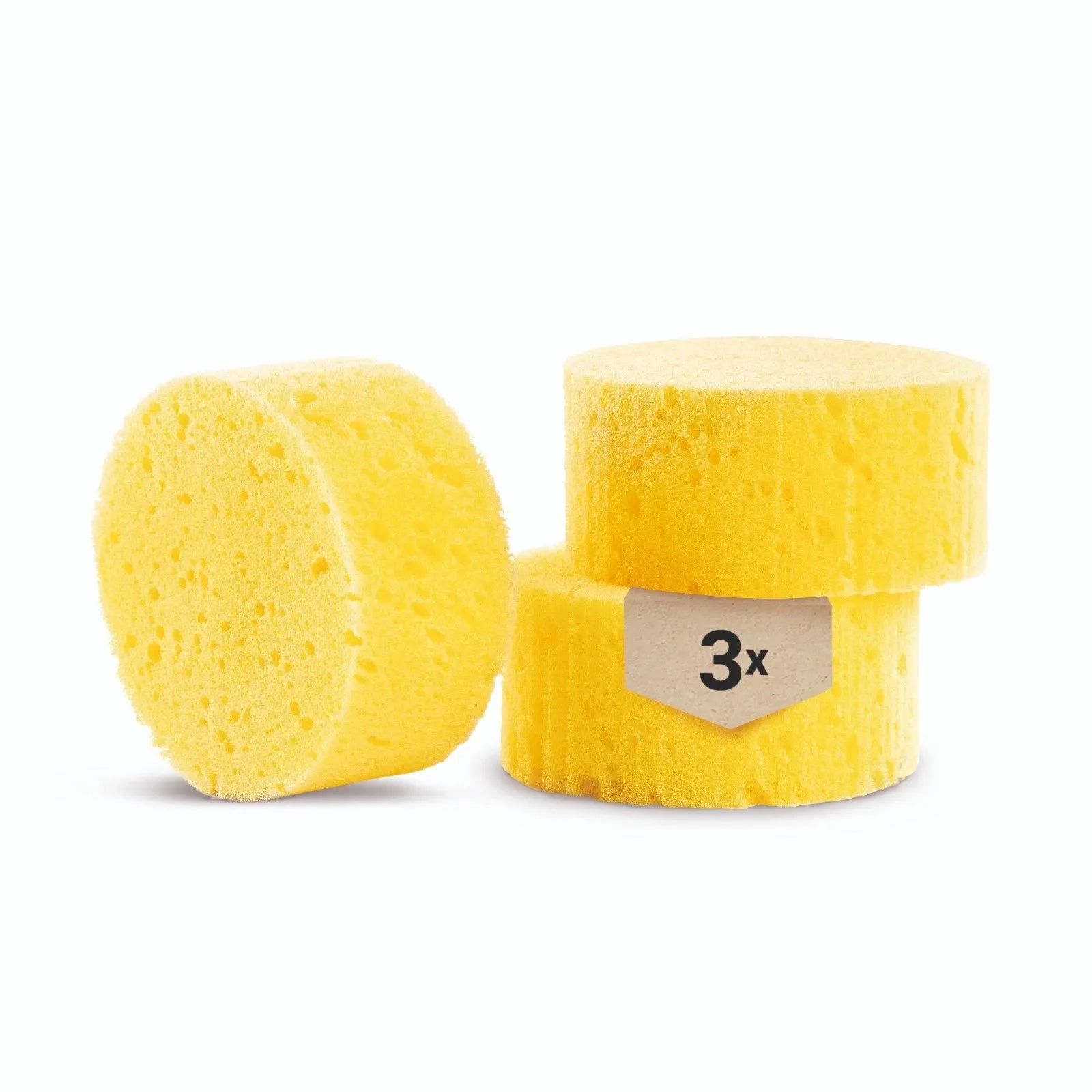Stainless steel is not only a visual highlight, but is also known for its robustness and durability. Stainless steel household items such as pots, cutlery and appliances can withstand daily use and show less signs of wear than other materials. In addition, cleaning stainless steel surfaces is an easy undertaking.
Even water stains and fingerprints can be easily removed without having to spend hours using a cleaning cloth. This is precisely why more and more people are opting for everyday objects and kitchens made of modern stainless steel. Interiors are perfectly enhanced by this beautiful yet understated material. But in order for stainless steel to retain its unique charisma, it needs the right care. The following guide provides you with helpful information on cleaning and care and shows you how your stainless steel can look like new even after years.
Stainless steel: These properties make the material so special
It's not just its robustness and durability that makes stainless steel a popular material. The following properties also impress people like you and me:
- Hygienic properties: The non-porous stainless steel surface prevents the penetration of bacteria and germs, which is an important hygiene criterion especially in kitchens and bathrooms.
- Heat resistance: Stainless steel cookware and utensils are generally heat resistant, making them ideal for use on stoves and in ovens.
- Corrosion resistance: Stainless steel resists corrosion and rust thanks to the alloying elements it contains, such as chromium. This makes it ideal for use in damp or wet areas, such as the kitchen or bathroom.

Image source: Pixabay
- Neutrality: The material does not react to food and does not affect its taste or smell, which is important for cookware and kitchen utensils .
- Modern look: Stainless steel has a timeless, modern look that blends well with a variety of interior styles. It can be polished and brushed to create different looks ranging from elegant to industrial chic.
- Environmental friendliness: In addition to its long lifespan, stainless steel is also recyclable, which is beneficial for environmentally conscious households.
For the reasons mentioned, stainless steel is a popular material for a variety of products and surfaces in modern households. Do you want to make your stainless steel shine? We'll show you how to clean the material without having to resort to harsh chemicals. Whether it's kitchen appliances, work surfaces or decorative objects: with the following tips, cleaning stainless steel is child's play.
Cleaning stainless steel with household remedies: Here's how!
It's no secret that stainless steel is known for its durability and shine. But fingerprints, water spots and other dirt can tarnish its appearance. This is where household remedies come into play that clean effectively and gently. But which ones are suitable for cleaning stainless steel? You probably have the following all-rounders at home:
- Water and microfiber cloth: For everyday dirt and fingerprints, all you need is warm water and a microfiber cloth. After wiping with a damp cloth, however, you should polish with a dry cotton cloth. This can prevent water stains.
- Dishwashing detergent: A mild dishwashing detergent diluted in water can help remove greasy stains . The surface should then be rinsed with clean water and buffed dry.
- Vinegar: Diluted vinegar is suitable for removing limescale deposits . A solution of water and vinegar can be sprayed on or applied with a cloth. To remove vinegar residue, the surface should be rinsed with clean water and dried after use.
- Baking soda: A paste made from baking soda and water can help remove stubborn stains . Simply apply, allow to sit for a moment, then rub gently. Then rinse thoroughly and wipe dry.
- Olive oil or baby oil: After cleaning, a little oil can be put on a soft cloth and used for polishing. This leaves a beautiful shine and at the same time forms a protective layer that reduces the adhesion of dirt and fingerprints.

Image source: Pixabay
- Sparkling water: Carbonated mineral water can also be sprayed onto the surface and then wiped with a soft cloth to achieve a streak-free shine .
- Lemon juice: Lemon juice can be used similarly to vinegar to remove stains and disinfect , but it should also be rinsed thoroughly to remove any acid residue.
Emma Grün Tip: When using the household remedies mentioned, you should first test the material compatibility on an inconspicuous area. This way you can be sure that no damage will occur. Also avoid using abrasive sponges or steel wool, as these can leave scratches.
Does vinegar attack stainless steel?
The question is often asked: "Does vinegar attack stainless steel?" The answer is: It depends. While diluted vinegar can help remove water stains, you should avoid using it undiluted . The acid can cause damage if it is left to act for too long or if the concentration is too high. We therefore recommend only using diluted vinegar and in combination with oil . This way you can benefit from the cleaning effect without damaging your stainless steel. You can find out how to do this in the following instructions.
Cleaning stainless steel with the miracle cure oil: step-by-step instructions
Yes, you heard right: oil is not just for cooking! A few drops of cooking oil on a soft cloth can work wonders when it comes to polishing stainless steel. The oil makes water stains disappear and gives your surfaces a protective shine . Simply apply, polish and wipe with a clean cloth. Here's how to do it:
Step 1: Clean
First, you need to remove any coarse dirt from the surface. A soft, damp cloth is ideal for this.
Step 2: Remove water stains
Now dilute some vinegar with water and spray the stained areas. Allow it to take effect for a short time and then wipe off with a soft cloth.
Step 3: Polish the stainless steel surface with oil
Put a few drops of oil on a microfiber cloth and rub it gently over the stainless steel. The oil nourishes the material and makes it shine.
Step 4: Remove excess oil
Finally, you should go over the treated areas with a clean, dry cloth to remove excess oil.
Emma Grün Tip: With the simple steps and proven household remedies discussed, you can clean and care for your stainless steel without having to worry about damage. Remember to always wipe in the direction of the grain to avoid scratches and achieve the best results. Try it out and enjoy your shiny stainless steel surfaces and fittings.
Cleaning stainless steel: Sustainable stainless steel cleaners give it a new shine
With the help of sustainable stainless steel cleaners, you can remove dirt and fingerprints from your stainless steel surfaces while protecting the characteristic surface. Products such as the stainless steel cleaner from Emma Grün do not contain any harmful ingredients that can attack and damage the material. The following instructions will help you to implement this:
- Choose a cleaner: Make sure you use a cleaner that is specifically designed for stainless steel. Products are available in the form of sprays, wipes or emulsions.
- Apply cleaning: To ensure that the cleaner does not cause damage or discoloration, we recommend that you test the product in an inconspicuous area beforehand . Apply the product to the stainless steel surface according to the instructions. Some products need to be sprayed onto a cloth, others directly onto the surface.
- Cleaning: Now the stainless steel cleaner can be worked evenly into the material using a clean microfiber cloth . With structured stainless steel, you should make sure to clean in the direction of the grain . This way you avoid unsightly streaks.
- Aftercare: Some products need to be left to work for a short time to remove stubborn dirt. Then wipe the surface with a clean, damp cloth and remove any excess cleaner.
- Polishing: For additional shine, you should polish the stainless steel again with a dry cloth after cleaning.
Emma Grün Tip: Regular cleaning with a stainless steel cleaner can help build a protective layer that prevents future dirt and fingerprints.
What should you consider when cleaning stainless steel?
Cleaning stainless steel is not rocket science. However, there are a few things you should keep in mind when doing it. Because even the wrong product or unsuitable cleaning utensils can destroy the surface of stainless steel forever . You should keep the following things in mind when caring for stainless steel surfaces:
- Soft cloths: Always use soft microfiber cloths to avoid scratches.
- No abrasive cleaners: Abrasive cleaners, steel wool or abrasive sponges can scratch the surface and should be avoided.
- No chloride: Avoid cleaners that contain chloride. They attack stainless steel and destroy the beautiful surface.
- Keep dry: To prevent water stains and corrosion, stainless steel surfaces should always be kept dry.
- Pay attention to the cleaning direction: With brushed stainless steel, you should always clean in the direction of the grind.
Regular care with suitable cleaners such as the stainless steel cleaner from Emma Grün keeps the material visually appealing and lasts longer.
Cleaning & maintaining stainless steel: Why sustainable stainless steel cleaners are the best choice
Sustainable stainless steel cleaners have several advantages over conventional cleaning products, both in terms of environmental and health aspects. Of course, we don't want to withhold from you the positive properties that natural cleaners have.
- Biodegradable ingredients: Sustainable cleaners often use ingredients that break down more easily after use, causing less long-term harm to the environment.

Image source: Pixabay
- Avoid chemicals: Many conventional cleaners contain aggressive ingredients that can enter water bodies and negatively affect water quality and aquatic life. Sustainable products do not contain such substances.
- Reducing harmful fumes: Many standard cleaners release fumes that can cause respiratory problems or trigger allergic reactions. Sustainable cleaners are gentler and safer for the respiratory system.
- Reduction of skin irritation: Sustainable cleaners are less aggressive, which reduces the risk of skin irritation for the user.
- Gentle cleaning: Sustainable cleaners are effective but gentler on surfaces, which promotes the longevity of stainless steel objects.
- Material protection: Some conventional cleaners can permanently damage stainless steel and other materials. Sustainable options are often designed to not only clean the material but also protect it from external influences.
- Recycled & recyclable packaging: Sustainable products often use packaging made from recycled material and are themselves easier to recycle.
- Conservation of resources: Companies that produce sustainable cleaners often also pay attention to environmental protection in other areas, such as production, transport and the selection of their suppliers.
- Transparency: Sustainable brands like Emma Green tend to offer complete transparency about their ingredients so consumers can make conscious choices.
- Social commitment: Many manufacturers of sustainable cleaning products are socially committed and support environmental or community projects.
- Economical use: Concentrated formulas mean you need to use less product to achieve the same result, which saves money in the long run.
When choosing between traditional and sustainable cleaners, it is important to remember that it is not just about immediate cleanliness, but also about long-term health, environmental sustainability and reducing the carbon footprint. So the benefits mentioned should make your decision easier. Or what do you think?
Conclusion
Cleaning stainless steel is straightforward and can be done effectively with a range of household products such as vinegar, baking soda or even oil, each of which has its own special properties when it comes to removing dirt or polishing the surface. For daily care, a microfiber cloth and water are often sufficient. Special cleaners offer another option that allows for intensive cleaning and often leaves a protective film that repels new dirt.
Sustainable stainless steel cleaners are the better choice for the environment and health, as they do not contain aggressive chemicals and are just as effective as conventional products. Regular care ensures that stainless steel remains durable and retains its shine without harming the environment or your own well-being.
FAQ: Questions & Answers
What is the best way to clean stainless steel?
Stainless steel is best cleaned with a soft cloth and warm water. For stubborn stains, mild household remedies such as dishwashing liquid, a mixture of vinegar and water or a sustainable stainless steel cleaner can be used. After cleaning, the surface should be polished dry to avoid water spots.
Does vinegar attack stainless steel?
Diluted vinegar does not generally attack stainless steel and can be used effectively to remove limescale deposits. However, it is recommended that the surface be rinsed with water and dried after use to remove any acid residue.
Can I use oil to polish stainless steel?
Oil is a great way to polish stainless steel to a high shine after cleaning. Apply some vegetable oil or baby oil to a soft cloth and work it into the surface. Oil also leaves a protective layer that helps reduce fingerprints.
Are special stainless steel cleaners necessary?
Special stainless steel cleaners are not absolutely necessary, but can be extremely helpful in removing fingerprints and protecting the surface from future contamination. They are specially designed to clean and preserve without causing damage.
Why are sustainable stainless steel cleaners the better choice?
Sustainable stainless steel cleaners are environmentally friendly and safe for your health because they do not contain harsh chemicals and are based on natural ingredients. They are biodegradable and often come in recyclable packaging, making them an environmentally responsible choice.
Sources
1. Cleaning stainless steel – https://www.edelstahlrohrshop.com/blog/service/edelstahl-reinigen.html
2. Thanks to these household remedies, your stainless steel will shine like new – https://www.merkur.de/leben/wohnen/edelstahl-reinigen-hausmittel-natron-essig-backpulver-zr-9945249.html
3. Clean stainless steel with conventional household remedies – https://umzugsfuchs.ch/mit-herkoemmlichen-hausmitteln-edelstahl-reinigen/
4. 5 tips and home remedies for cleaning stainless steel – https://www.heimwerker.de/edelstahl-reinigen/
5. Cleaning stainless steel – https://www.cleanipedia.com/de/kueche-putzen/edelstahl-reinigen.html



